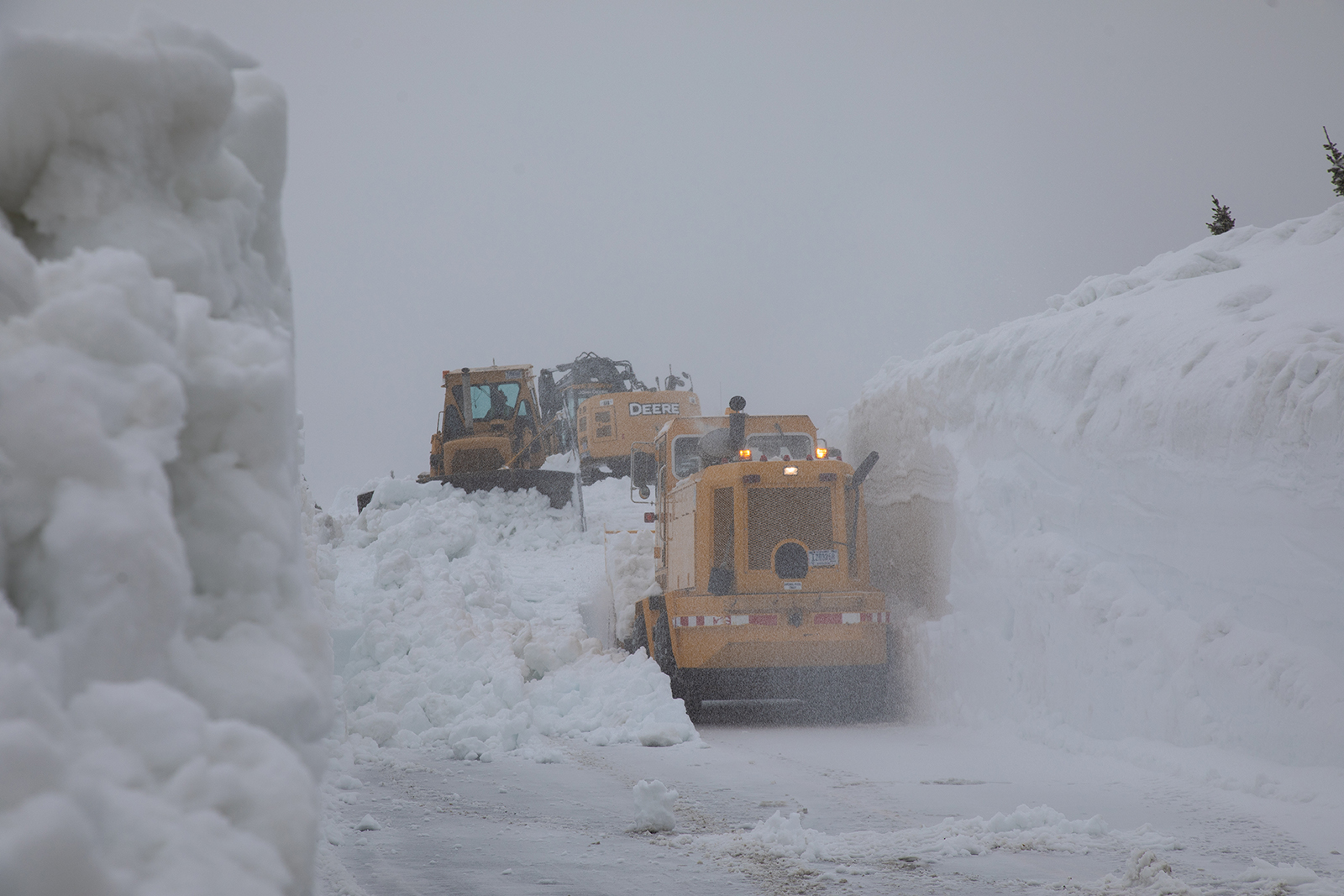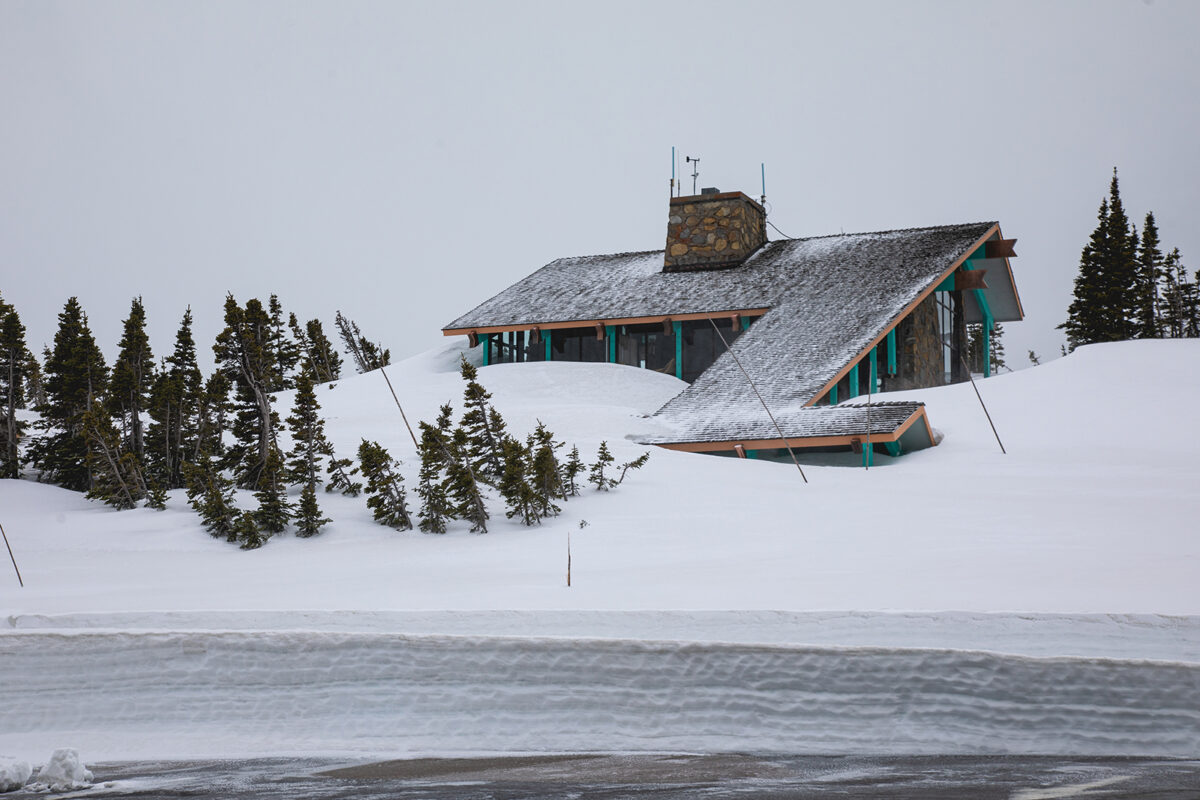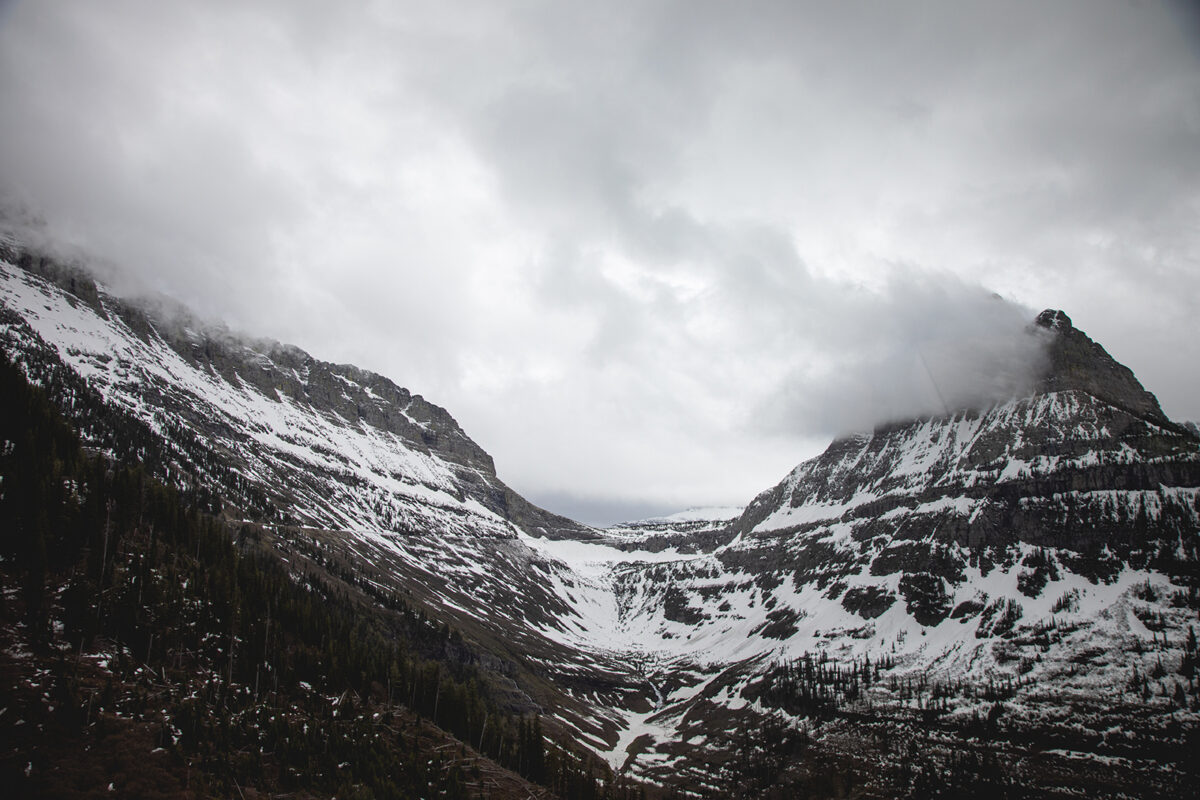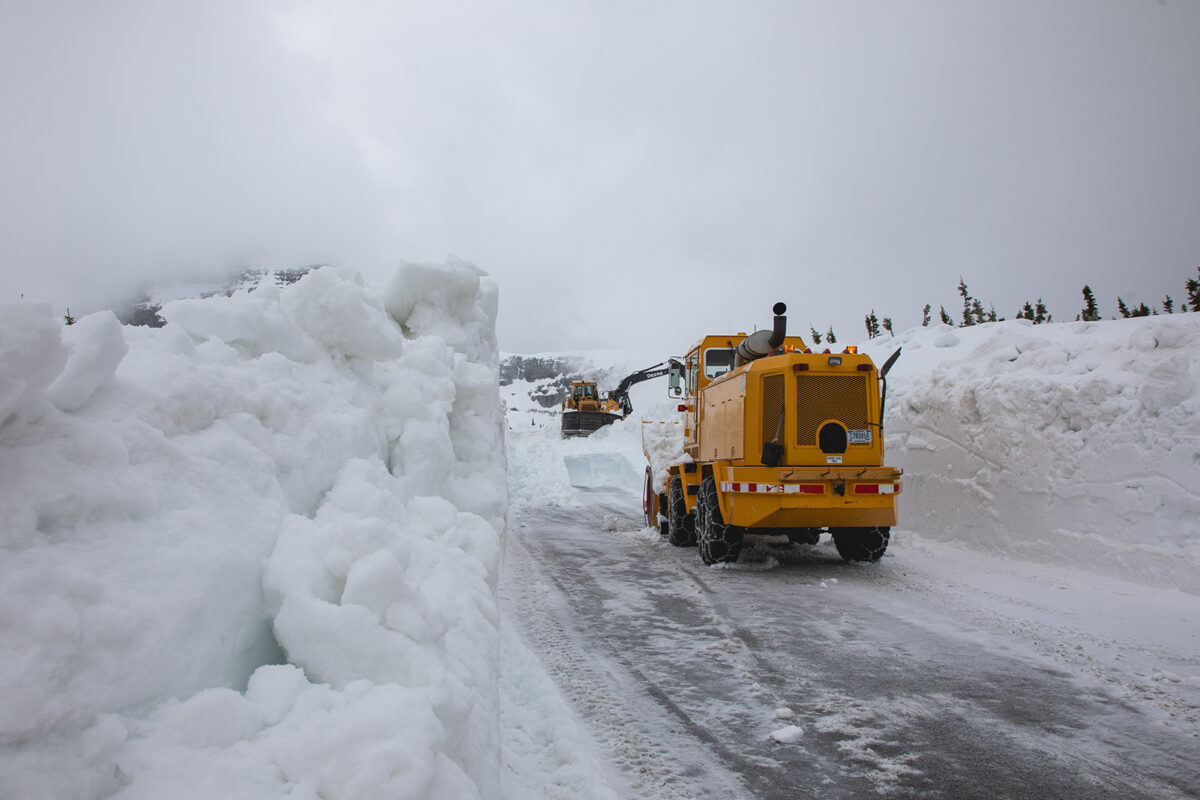
As Plows Reach Logan Pass, Glacier Park’s High Country Hangs onto Winter
Despite a lagging winter snowpack, plow crews on Going-to-the-Sun Road have encountered the most snow in the park’s alpine reaches since 2011; the road's full opening to Logan Pass remains weeks away
Despite the wintry weather and cool temperatures that have buffeted Glacier National Park’s alpine reaches for much of May, plow crews tasked with clearing the Going-to-the-Sun Road have topped out on the Continental Divide at Logan Pass, where they’re now working to clear the visitor center’s parking lot, exhume buildings and unburden the park’s precipitous mountain byway of the “Big Drift,” the last major obstacle in the quest to clear the road for summer.
A colossal snowbank located just east of Logan Pass, the Big Drift currently towers 80 feet above the roadbed at precipitous angles, dwarfing the fleet of plows working to pioneer a route through what to a casual observer amounts to an impenetrable wall of white.
Not so for the seasoned members of the park’s intrepid plow crew, however, who are accustomed to springtime snow, especially in Glacier’s high country. Still, even as members of the 20-person road crew made progress after a storm system over Memorial Day weekend delivered more than 3 feet of snow at some mountainous elevations while hammering the east side with gusting wind, Glacier National Park Road Crew Supervisor Brian Paul said this spring has presented his staff with a unique set of challenges.
“What’s interesting about this year is that, when we started in April, we were using a small crew and less equipment but we still made record time to Big Bend,” Paul said on May 30. “Then we started getting into a deep snowpack. At the top, the snow hasn’t even started to melt. It’s super deep. Yesterday, they dug through seven avalanches just to get up to the pass. They dug through three more this morning.”
Since May 13, Paul said 34 avalanches have crashed onto the Going-to-the-Sun Road, reinterring segments of the roadbed in deep snow and debris, and requiring crews to begin again the Sisyphean task of clearing Mother Nature’s inconsiderate deposits.
“Because of these late storms that we’ve been getting up top — just the week before last we had 3 feet of snow — it’s pushed us back a long way,” Paul said. “We had to dig a long way just to get back to our equipment. So, we have had some really heavy snows at the pass this month.”

At 6,600 feet, Logan Pass often continues to accumulate snow during the month of May. What’s been unusual about this spring, Paul said, is that freezing temperatures have preserved the existing snowpack as the storms continue to supplement it.
According to Paul and the team of U.S. Geological Survey avalanche forecasters that relay him information, the snow water equivalent (SWE) at Logan Pass — a measure of the volume of water contained in the snowpack — registered at 90% of normal this week. By comparison, SWE levels were at 76% of normal across the Flathead River Basin in April. In the Swan Range, the SWE registered at 35.2 inches on May 31, compared to a median SWE depth of 28.5 inches for that date based upon a 30-year period; that latest observation brings the Swan Range SWE to 125% of normal, though still well below the record SWE depth of 70 inches recorded in 2011.
Still, Paul said the snowpack in Glacier’s high country is the deepest he’s seen it since 2011, when the Flathead’s snowpack was 123% of average at the beginning of March, making it the deepest winter since 1997. It’s a phenomenon that’s all the more remarkable given the Flathead Valley’s dry winter, Paul said, which saw El Nino weather systems suppress northwest Montana’s snowpack, prompting hydrologists to predict another summer of drought.

It’s a similar story on the east side of the Continental Divide, where road crews spent much of April clearing the Many Glacier and Two Medicine areas of snow before beginning on the section of the Sun Road from St. Mary to Logan Pass. Once they did, Paul said there was no stopping them.
At least, not initially.
“They basically made it from Rising Sun to Jackson Glacier Overlook in a day,” he said, referring to an 8-mile stretch of the Going-to-the-Sun Road. “Then it got deep.”
“It’s very unpredictable,” Paul said. “A month ago, I would have guessed that we were going to have the road open by Memorial Day. We were on record pace and then ‘bang,’ Mother Nature jumps in and says, ‘not so fast.’ We could get a period of warmer weather starting tomorrow, or we could get snow into July. It’s always changing up there.”
Visitors are now able to drive on 29 miles of the iconic highway: 15.5 miles from the West Entrance to Avalanche and 13.5 miles from the St. Mary Entrance to Jackson Glacier Overlook. Hiker and biker access is in full swing, although visitors should use extreme caution above The Loop on the west side and Jackson Glacier Overlook on the east, as hazards are present, including rockfall and avalanches.
As of May 24, vehicle reservations are required for all west side park entrances, as well as at the Many Glacier entrance starting July 1. Vehicle reservations are not required for St. Mary and Two Medicine entrances in 2024. Check the Glacier National Park website for details.
Next week, Paul said he’ll assign 18 machine operators to the task of clearing the Big Drift as well as digging out the buildings at Logan Pass and clearing the walkways, which he said remain buried in 8-10 feet of snow. He’ll also assign two masons to repair sections of the road and its guardrails that were damaged by rockfall, “so that people can drive the Sun Road without seeing holes in the walls.”

The number of holes in the walls is reduced due to the removal each fall of 500 sections of stone guard walls, which must be reinstalled every spring.
“Putting the railings in is a two- to three-week process alone,” Paul said. “Then we’ve got to clean up all the rock on the road, which means sweeping from Packer’s Roost all the way up. We bring the sweeper truck in for that. “We’ll get there eventually,” Paul said, “but for now, driving on the Sun Road is like driving through a tunnel, with 10-foot walls of snow on either side of your vehicle.”